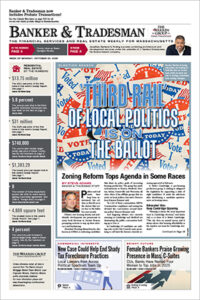
Lew Sichelman
As if rising mortgage rates and high house prices aren’t enough, homebuyers in the new year are going to have to contend with higher fees to obtain their credit reports. In some instances, a credit report will cost 400 percent more in 2023 than it did in 2022.
According to the National Consumer Reporting Association, the Fair Isaac Corporation – aka FICO – is raising its price less than 10 percent to a select group of about 46 lenders. The company is behind the FICO scores many lenders use to rate applicants’ ability to make their mortgage payments.
Six lenders will pay about 200 percent more, and the rest will pay four times what they were.
Lenders usually pay to run a credit check and obtain a score for every loan applicant, then collect the cost from those who pass muster at the closing table.
In a memo to lenders, NCRA Executive Director Terry Clemans called the price hike “massive,” saying, “This is a paradigm shift in the pricing structure for credit scores.” He said that the change is being “dictated” by all three national credit bureaus – TransUnion, Equifax and Experian – and FICO.
Free Refis?
To entice borrowers who fear being stuck with 7 percent interest rates on their mortgages, some lenders are offering to refinance loans for free if rates should fall.
But, borrower, beware: Most lenders are adding the fees for a potential refi into the cost of the original loan. So, your rate could be 0.25 percent or more higher than you might find at a competing lender.
The moral, of course, is to shop around.
Conforming Limits Pass $1M
Savvy homebuyers can lower their mortgage costs a tad by opting for a loan that will be purchased from their lenders by Fannie Mae or Freddie Mac.
Loans acquired by the two government-sponsored enterprises can cost anywhere from an eighth of a percentage point to a half-point less than other mortgages. That’s because the investors who buy the GSEs’ securities believe that Uncle Sam will stand behind any mortgage that goes in default.
And starting next year, buyers in dozens of high-cost markets throughout the country can borrow up to a whopping $1,089,300 and still catch the price break. It’s the first time the so-called conforming loan limit has passed the million-dollar threshold.
Virginia alone holds 18 high-cost counties, while neighboring Maryland has five. New Jersey and New York contain 12 and 10 such counties, respectively. Even Idaho and West Virginia have one high-cost county each.
The limit for most of the rest of the country will be $726,200 in 2023, which is a 12.1 percent increase from this year’s ceiling of $647,200.
Meanwhile, the limit for government-insured FHA loans in high-cost markets also will be $1,089,300 in 2023, while the “floor” will be $472,030. Government-backed mortgages are often considered loans of last resort for buyers who are unable to qualify for conventional financing.
Permits Double as Demand Sinks
Finally, according to the Census Bureau, a record 111,000 new homes have been permitted but not yet started as builders face high mortgage rates and diminishing demand. That’s about double the normal level, housing blogger Bill McBride points out.
Builders are also losing deals at an alarming rate as buyers cancel their contracts. According to John Burns Real Estate Consulting, 1 in 4 sales were lost in October. And at the same time, the level of houses currently under construction is at an elevated level, with nearly a six-month supply underway at the current sales rate.
No wonder many builders are offering incentives and/or cutting prices to attract buyers. In November, the National Association of Home Builders reports, over 3 out of 5 builders were offering to buy-down mortgage rates, pay all or some closing costs or hand out free options and upgrades. And more than a third were slashing prices.
But NAHB Economist Paul Emrath reminds us that those numbers are a far cry from the lengths builders went to during the 2007-08 financial crisis. In October ’07, nearly 60 percent of all builders had trimmed their prices by an average of 7 percent. So far this year, the typical reduction is 5 percent.
Incentives, on the other hand, have always been part of the sales strategy when the market softens. During the 2007-08 crisis, well over 70 percent of builders offered one or more freebies. In December ’08, a whopping 86 percent were giving something away.
Lew Sichelman has been covering real estate for more than 50 years. He is a regular contributor to numerous shelter magazines and housing and housing-finance industry publications. Readers can contact him at lsichelman@aol.com.






